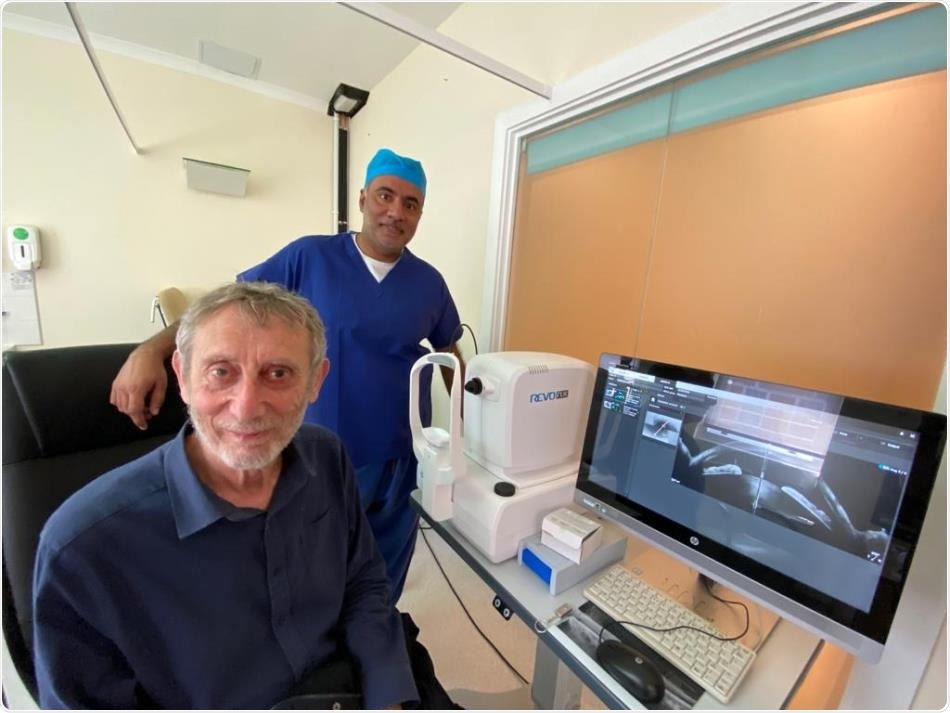The London Ophthalmology Centre (LondonOC) has developed a new, non-invasive technique for the application of Xen stent into the eye to treat acute glaucoma. The micro device and new technique was successfully used to save the sight of former Children’s Laureate, Michael Rosen.

Image Credit: London Ophthalmology Centre
Mr Vik Sharma (MBBS BSc FRCOphth), Clinical Director, London OC, (and is a Consultant Ophthalmologist, Cataract and Glaucoma Specialist at the Royal Free NHS Hospital, London).
Michael woke from a coma in hospital and the first thing he noticed was that he had a distinct fogginess in his left eye. I knew that if he was not treated in the next week or two, he could go blind. I used the Xen stent combined with a new technique to fit which creates a new pathway for the fluid to drain out of, but without the cuts and stitches, making it quicker and safer giving greater likelihood of a successful outcome for the patient.”
Mr Vik Sharma (MBBS BSc FRCOphth), Clinical Director, London OC
The traditional treatment pathway for glaucoma is managed with early diagnosis from an ophthalmologist where patients are usually prescribed drops to reduce the production of fluid and improve drainage. If this does not work a short laser treatment can open the drainage tube to release fluid.
However, the traditional procedure, a trabeculectomy, involves opening the tissue at the front of the eye. A flap is made underneath the eyelid, where a miniscule hole allows the fluid to drain away. The flap is then stitched up and closed. Successful in 80% of cases, scar tissue can form over the incision, causing the fluid to build up again. There can also be side-effects include blurred vision and possible loss of vision from a bleed in the eye and a risk of infection.
The revised and enhanced treatment to apply the Xen stent into the eye results in less scar tissue and faster healing times for patients leading to better outcomes for the most serious cases of glaucoma.
LondonOC uses pioneering innovative techniques with the best on-site technology including SLT laser; HD multifocal lenses and extended depth of focus lenses; minimally invasive glaucoma surgery (MIGS); Xen and preserflo stents; Hydrus and istent; and all glaucoma surgery.
Specialist treatment areas include; glaucoma, cataracts, vision correction, macular degeneration, trauma & injury, lens replacement, chronic & degenerative eye conditions. London OC is located at Queen Anne Street Hospital in Harley Street’s Medical Area and offers virtual consultations during the pandemic.